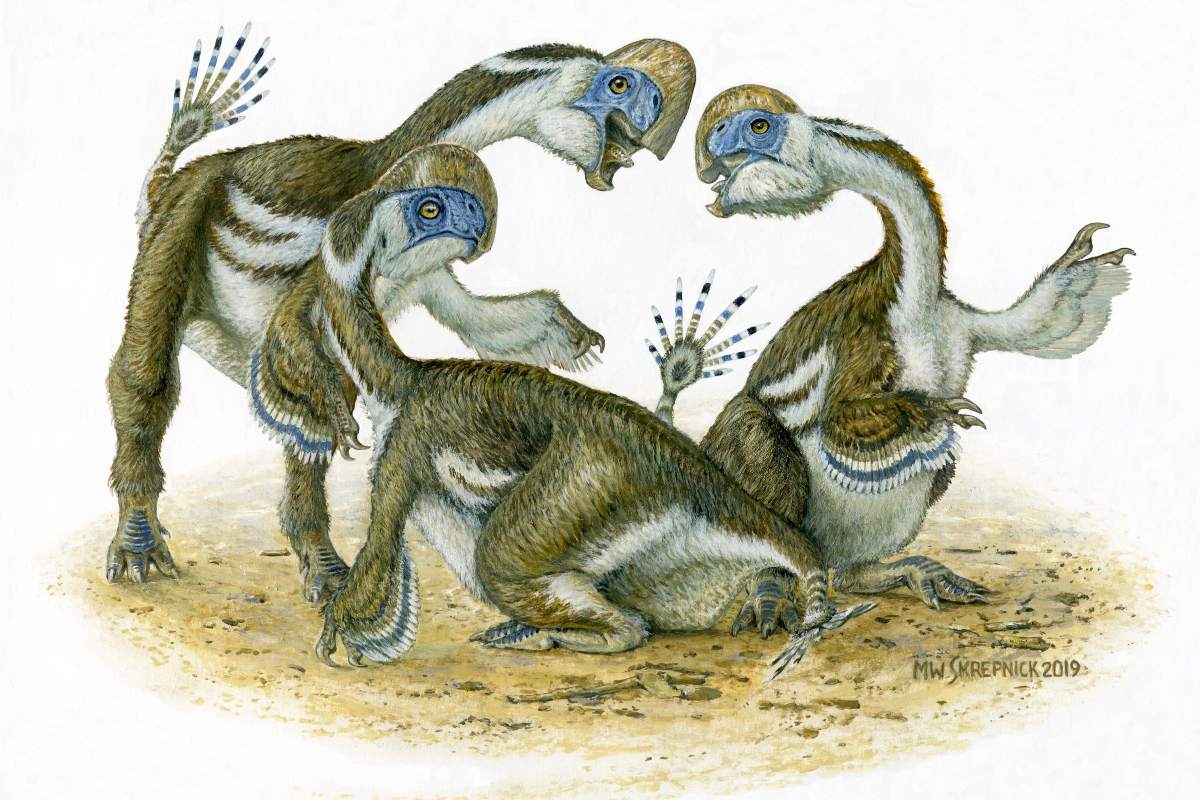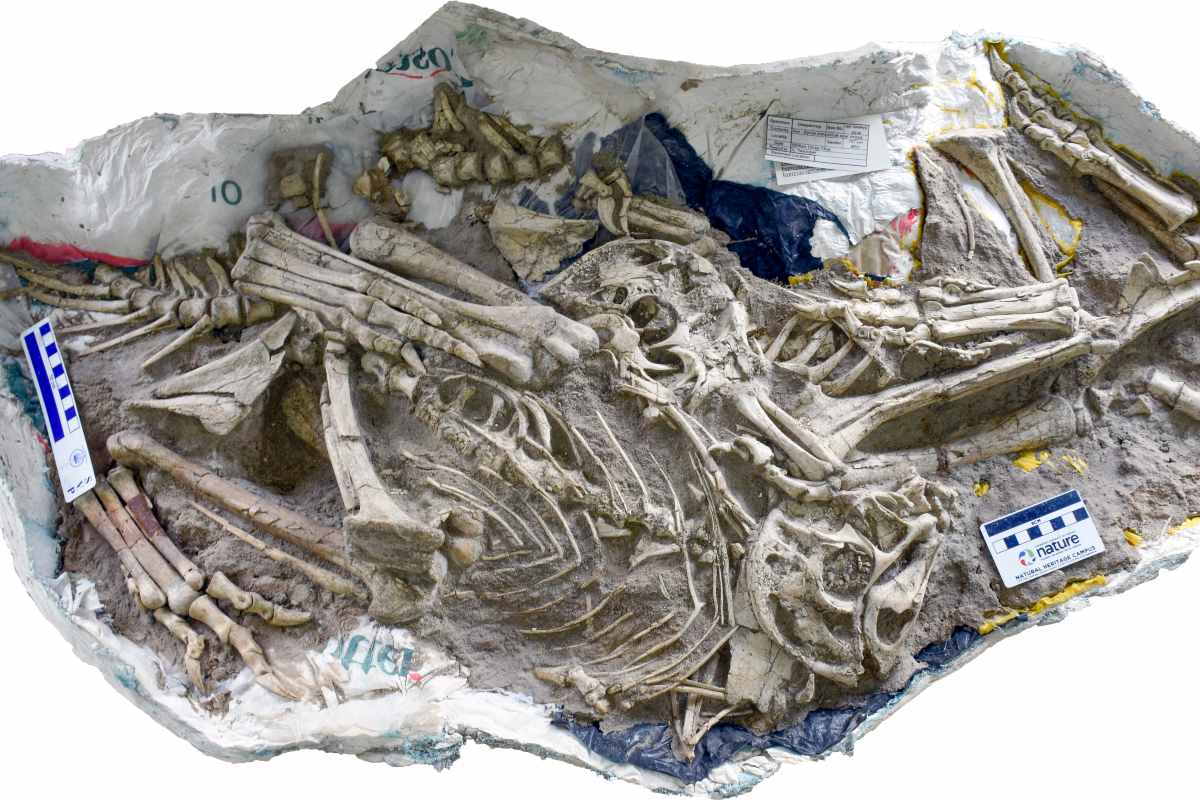
An artist’s depiction of what the new species of oviraptorid may have looked like. The discovery of several juveniles of the same age in a group suggests social behaviour by the species. Image credit: © Michael Skrepnick 2020
A smoking gun revealing a new species was a surprising discovery in the fingers of a fossil find. A collection of three fossilized bird-like dinosaurs has resulted in the discovery of an entirely new species by a team led by a University of Alberta alumnus.
“This study focuses on a spectacular fossil—a block of three bird-like dinosaurs preserved together,” said Greg Funston, lead author of the study and who completed part of the research during his doctoral studies in the Department of Biological Sciences under the supervision of Philip Currie. “Initially, we suspected that these fossils might be already known, but after comparing them to the possibilities, it became clear that there were significant differences that told us we were looking at a new species.”
The specimens belong to a group called oviraptorids, a subgroup of a larger group called oviraptorosaurs. The study names this new species, Oksoko avarsan, describes the morphology of its skeleton, and explores some of the biological information the fossils provide about these dinosaurs.
Two-fingered find caught red-handed
Fossil poaching
While a wealth of scientific data has come from this find, its origins are such that this discovery might not have ever happened. Funston explains the problem posed by fossil poaching:
“It’s important to highlight that some of these specimens were illegally collected by poachers. Fossil poaching is a global issue that stems mostly from the commercial fossil market in the United States and other countries. Once a price has been put on fossils, they become commodities, not heritage, and that means that important fossils like this one are sold on the black market. Fortunately, in this case, the specimens were confiscated before they left Mongolia, and they’re now housed at the Institute of Paleontology and Geology in Ulaanbaatar, the capital of Mongolia, so they’re available to science. Nonetheless, we lost a lot of the contextual information that is important in the study of fossils, and the fossils sustained some damage because they were not collected professionally. It’s a shame that such an important animal might have been lost to science so that someone could have a conversation piece in their living room.”
“The two-fingered hand was a completely unexpected twist. As I was initially working on the specimen, I noticed that most of the knuckle bones of the third finger were missing in the fossil,” said Funston.
This didn’t strike researchers as unusual—fossils are almost always found damaged or incomplete—but upon unearthing the other hand, they realized they had found something special.
“To my surprise, even though the bones were completely surrounded by rock and the finger should have been preserved, the third finger still only had one bone,” said Funston. “Looking more closely at this bone, we could tell that it didn’t form a joint, and so we could be confident that this species only had two fingers in life. This is unusual because other species in the group all have three fingers, and no one had ever suspected that these animals were losing their digits over time. The same phenomenon has been seen in some other kinds of dinosaurs, most famously the tyrannosaurs, but in this case it was unexpected.”
The find prompted scientists to look at the evolution of the hands and forelimbs closely, shedding new light on evolutionary trends as subgroups within the larger oviraptorosaur group migrated to different areas.
This pattern shows that these animals were highly adaptable, and we suspect that this is related to their dietary flexibility, said Funston.
“The pattern of diversification and adaptation that we see fits into an ongoing puzzle of whether dinosaurs were already in decline before their extinction 66 million years ago. A lot of new work has shown that this is probably not true. Our work shows that this group was flourishing in Asia just before the extinction, and so the pattern we thought we saw in North America is probably not representative of the whole world.”
The paper, “A new two-fingered dinosaur sheds light on the radiation of Oviraptorosauria,” was published in Royal Society Open Science. (doi: 10.1098/rsos.201184)
